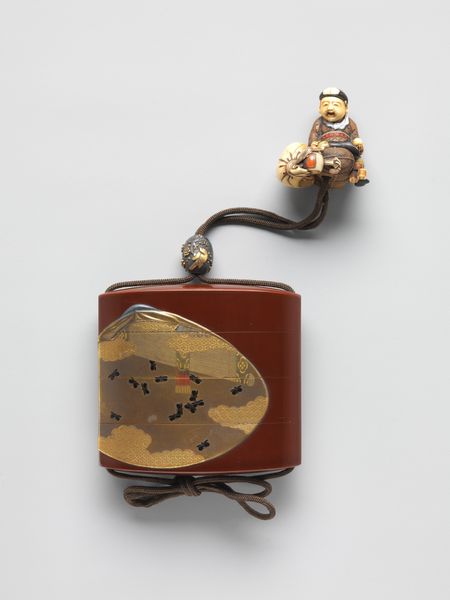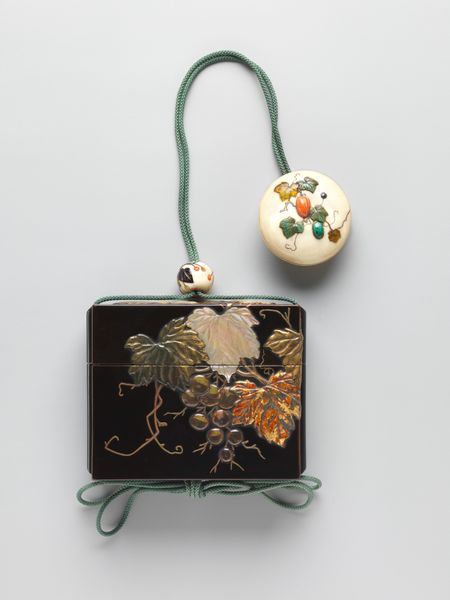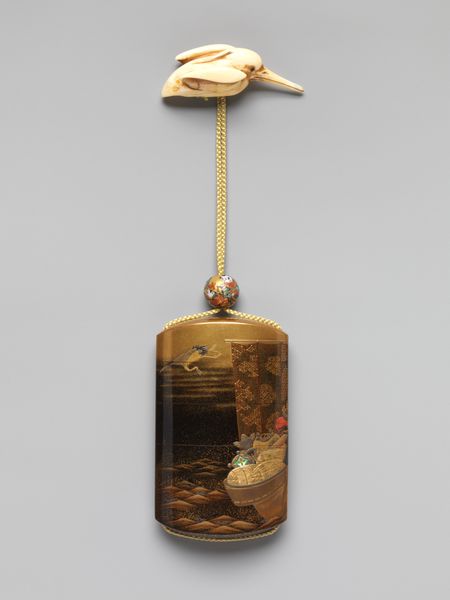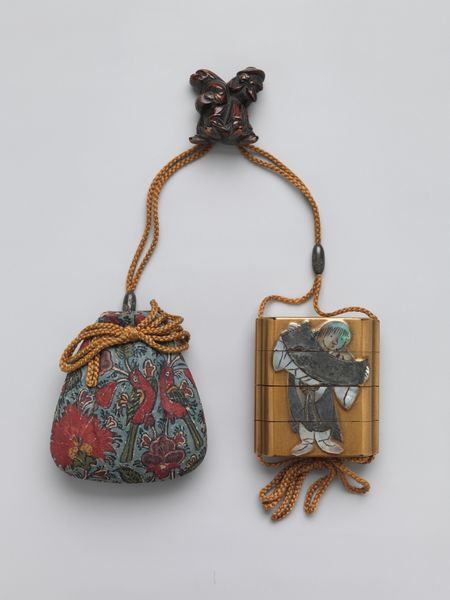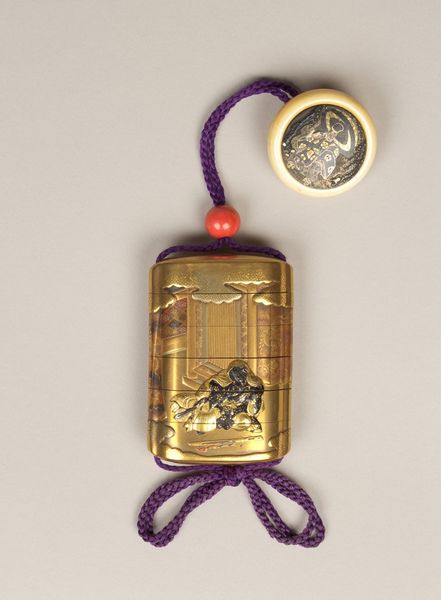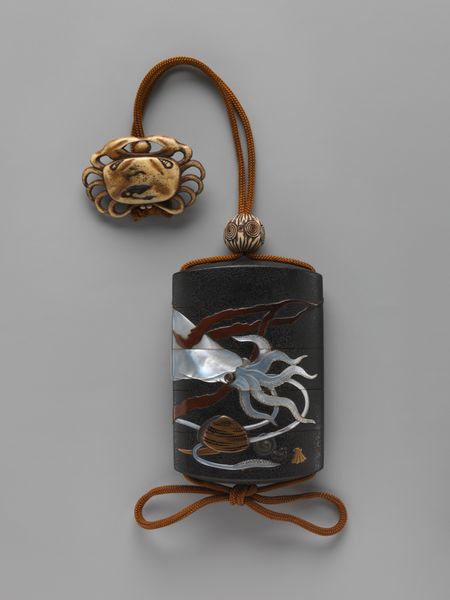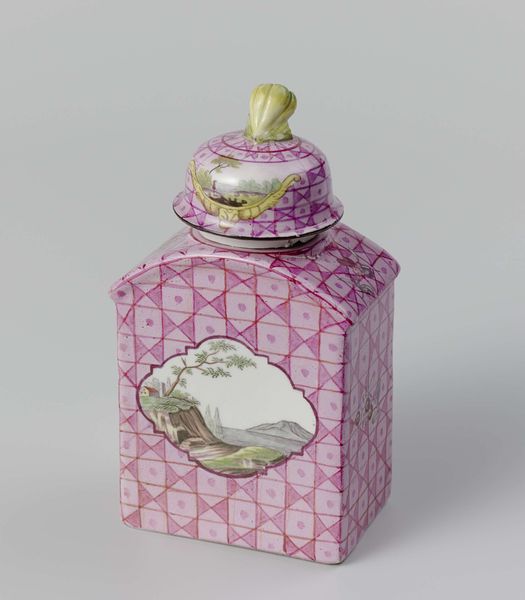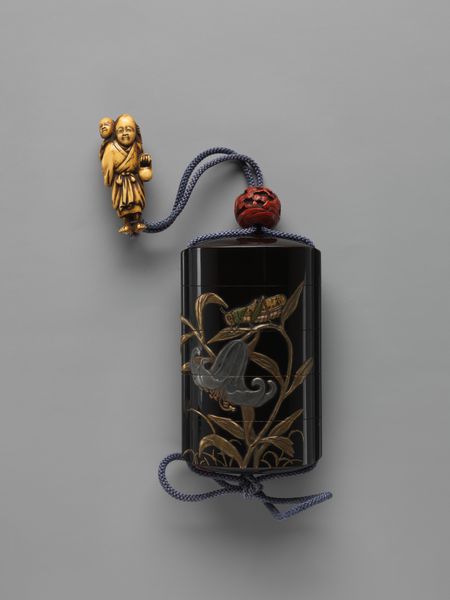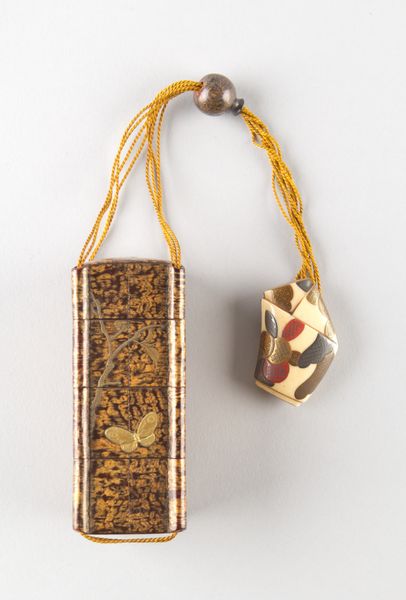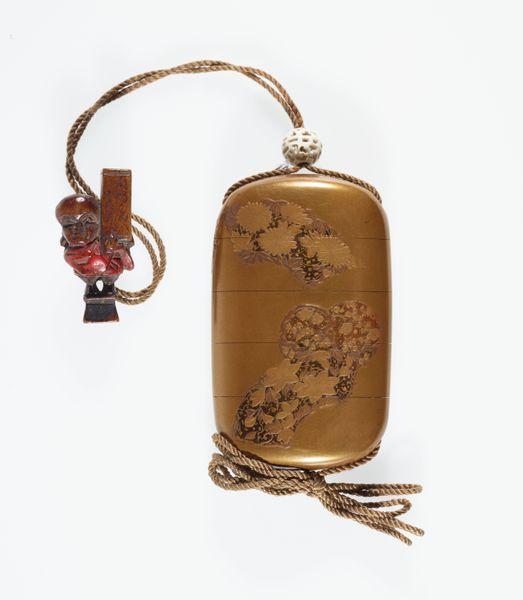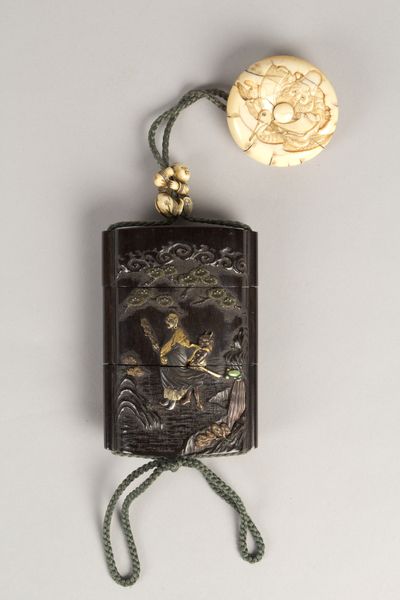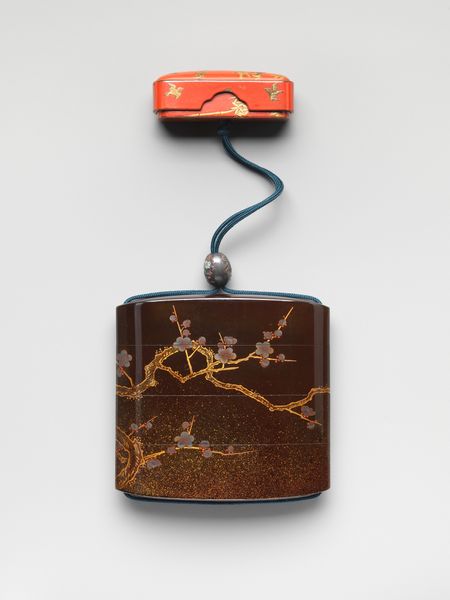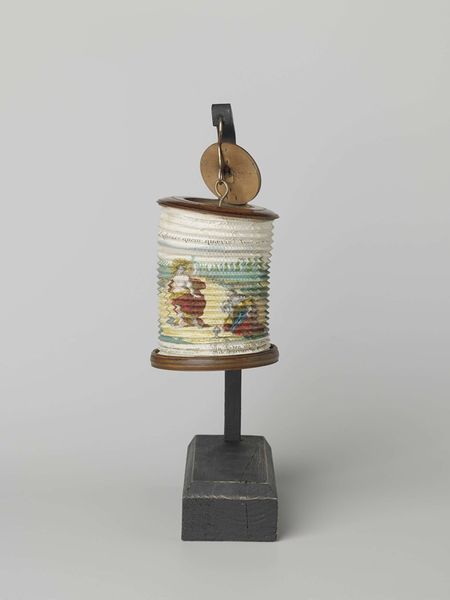
ceramic
#
asian-art
#
ceramic
#
orientalism
#
decorative-art
#
miniature
Dimensions: 3 x 3 1/8 x 13/16 in. (7.6 x 7.9 x 2 cm)
Copyright: Public Domain
Curator: Let's discuss this rather lovely 19th-century Inrō with Peacocks and Flowers, presently residing at The Metropolitan Museum of Art. The artist credited is Koma Yasutada. Editor: My eye is immediately drawn to the peacock motif – a brilliant splash of gold against that glossy, dark background. There’s something both regal and delicate about it. Curator: Inro like this, which is crafted using ceramic material, functioned as portable cases. The artist, Yasutada, seems deeply invested in the decorative process. The careful layering of the design, from the blossoms at the bottom to the curve of the peacock’s neck. It gives the impression of dedicated labor. Editor: And consider the peacock itself! Throughout numerous cultures, it represents beauty, royalty, and immortality. The feathers especially—each one is an eye! Is Yasutada perhaps suggesting the idea of watching or being watched, adding a layer of mystery to this piece? Curator: Perhaps. Yet the question arises, doesn’t the peacock, in its opulent and dazzling presence, hint at the material conditions which allow for such displays of artistry? And in what specific contexts were the materials available for crafting the body of the inro and for embellishing it with elaborate floral scenes and birds? Editor: Interesting questions! I believe the symbolic value can sometimes intertwine seamlessly with its material existence. For instance, a peacock's vibrant display might require access to certain pigments or dyes that would have also held their own symbolic importance or trade value. Curator: So, is the "Orientalism" classification listed really appropriate? It has a very strong visual relationship with traditional, native aesthetic practices. It seems unlikely this was meant to fulfill some kind of European fantasy or gaze. Editor: That's fair, and perhaps the term simplifies its complexity too much. It does invite contemplation on the relationship between cultural appreciation and possible misrepresentation. It shows how Asian art was consumed and interpreted through a Western lens at the time. Curator: Very well said. It also encourages further questions about which community created this Inro for their community, and where those cultural roots came from. Editor: Indeed. By exploring both the symbolic language and the material realities behind such pieces, we get a more nuanced understanding of art and its journey through history. Thank you!
Comments
No comments
Be the first to comment and join the conversation on the ultimate creative platform.
